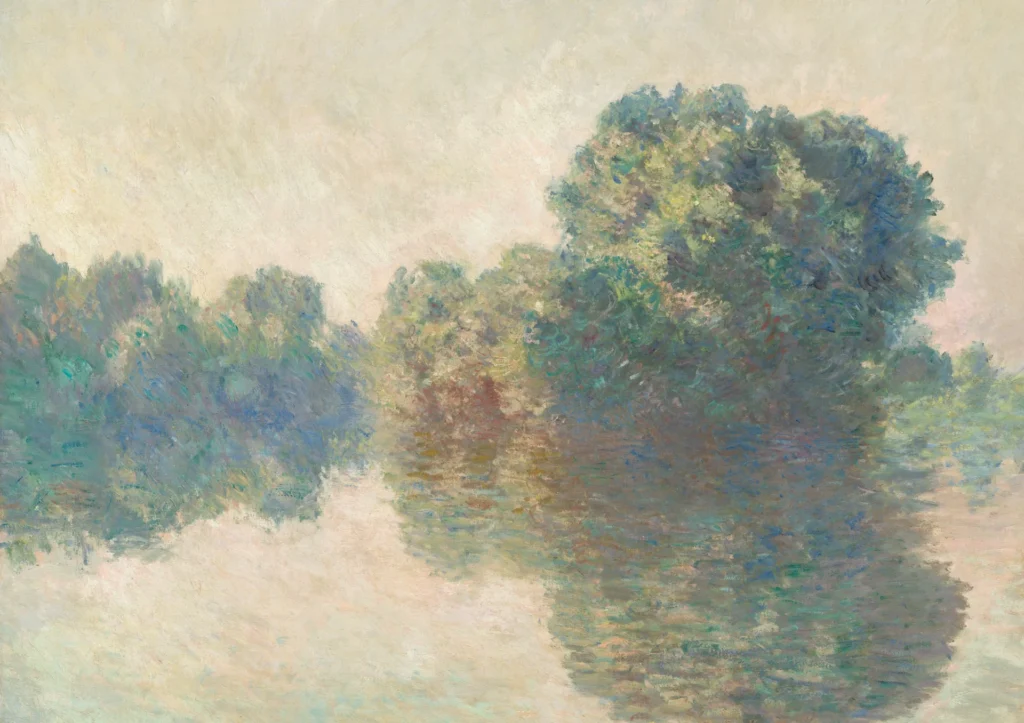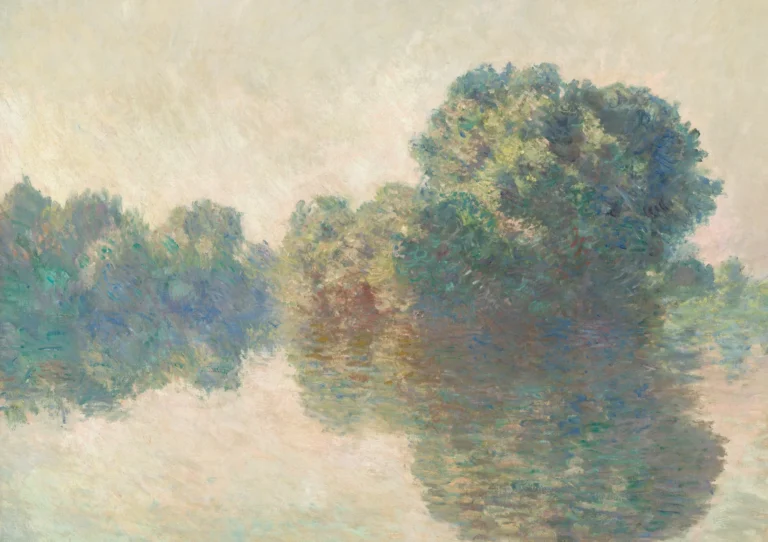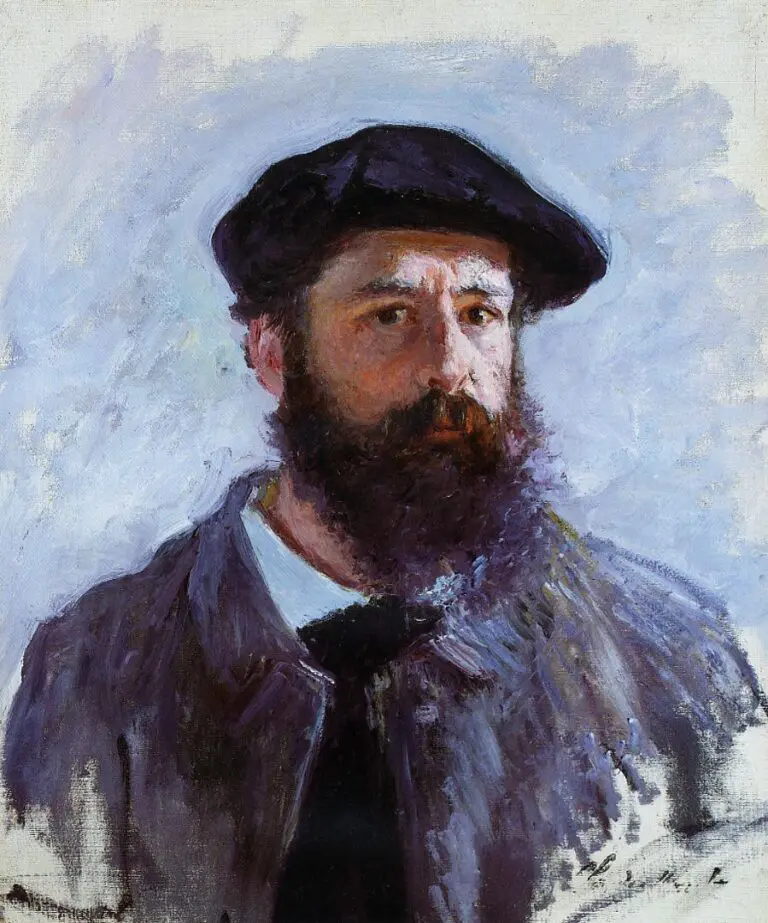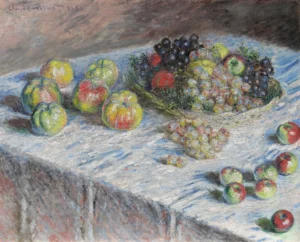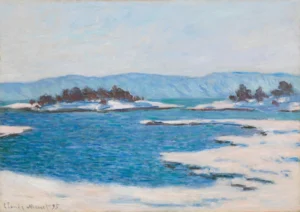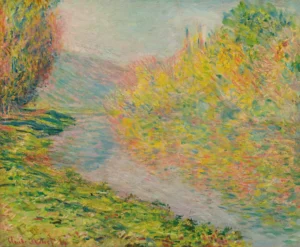The Seine at Giverny (1897)
Created in 1897, The Seine at Giverny is a captivating artwork by Claude Monet, part of his 'Mornings on the Seine' series. This painting masterfully showcases the ethereal effects of dawn light over the Seine River, characterized by soft purples and blues blending harmoniously. Monet's technique of using gentle brushstrokes to capture the spectral haze speaks volumes about his Impressionist style, drawing viewers into the serene beauty of the natural landscape.
1897
About the Artwork
The story behind The Seine at Giverny is rooted in Claude Monet's obsessive dedication to portraying the fleeting beauty of sunlight on water. Every morning, Monet would wake at the crack of dawn, carefully positioned in his floating studio—a small boat on the Seine. This unique working method allowed him to simultaneously engage with multiple canvases, ensuring each stroke captured the perfect moment of changing light. The paintings from this series represent more than just landscapes; they are a celebration of nature's ever-changing moods, making them significant both artistically and historically.
Did You Know
Monet’s creative process was rigorous; he often awoke at 3:30 AM, expertly navigating his small boat to capture the early morning light along the Seine River.
Monet’s approach in The Seine at Giverny exemplifies his Impressionist style, specifically his fascination with how light alters perception of color and form in natural landscapes.
The ‘Mornings on the Seine’ series, including The Seine at Giverny. is celebrated for its pioneering exploration of light, influencing countless artists and solidifying Monet’s legacy in art history.




